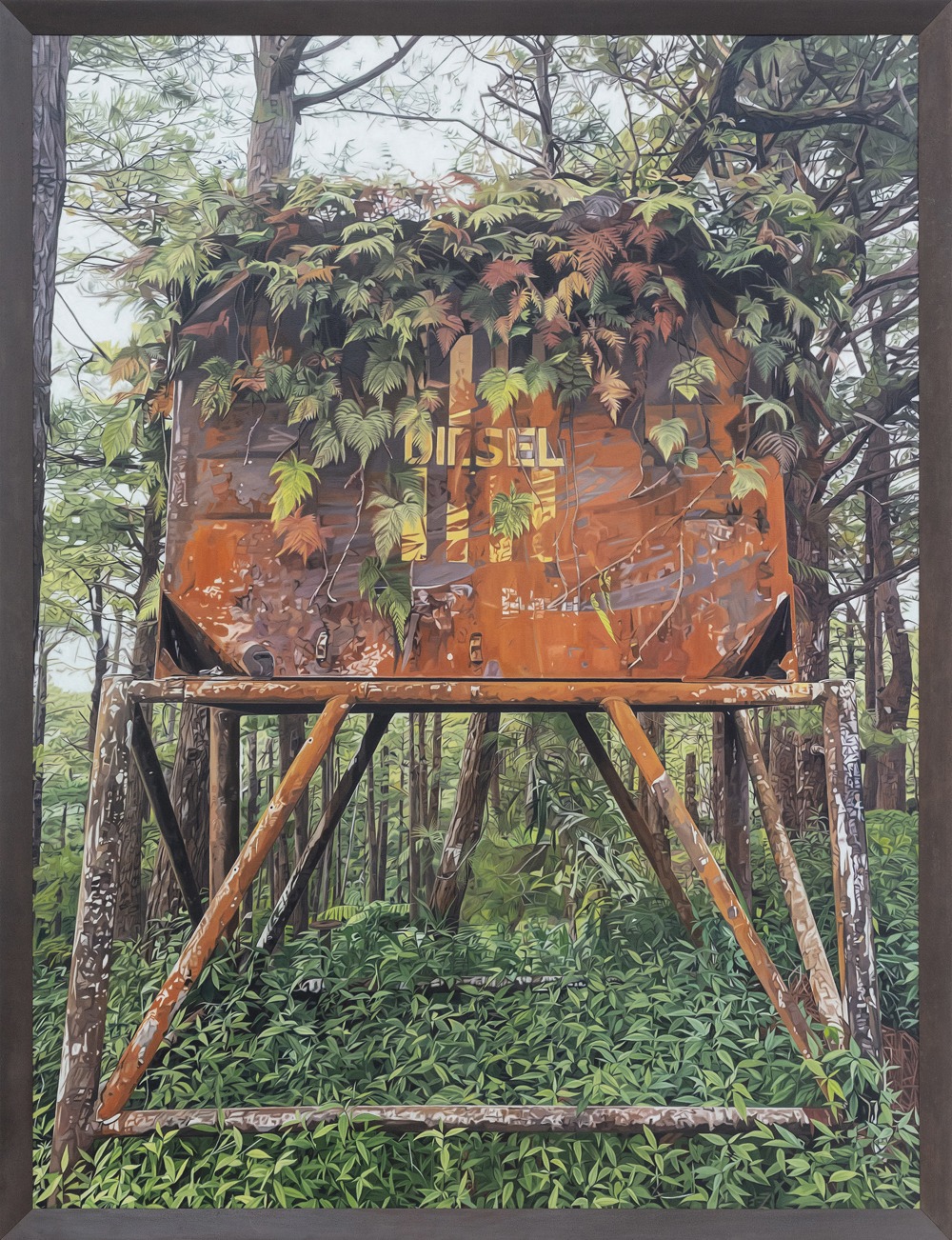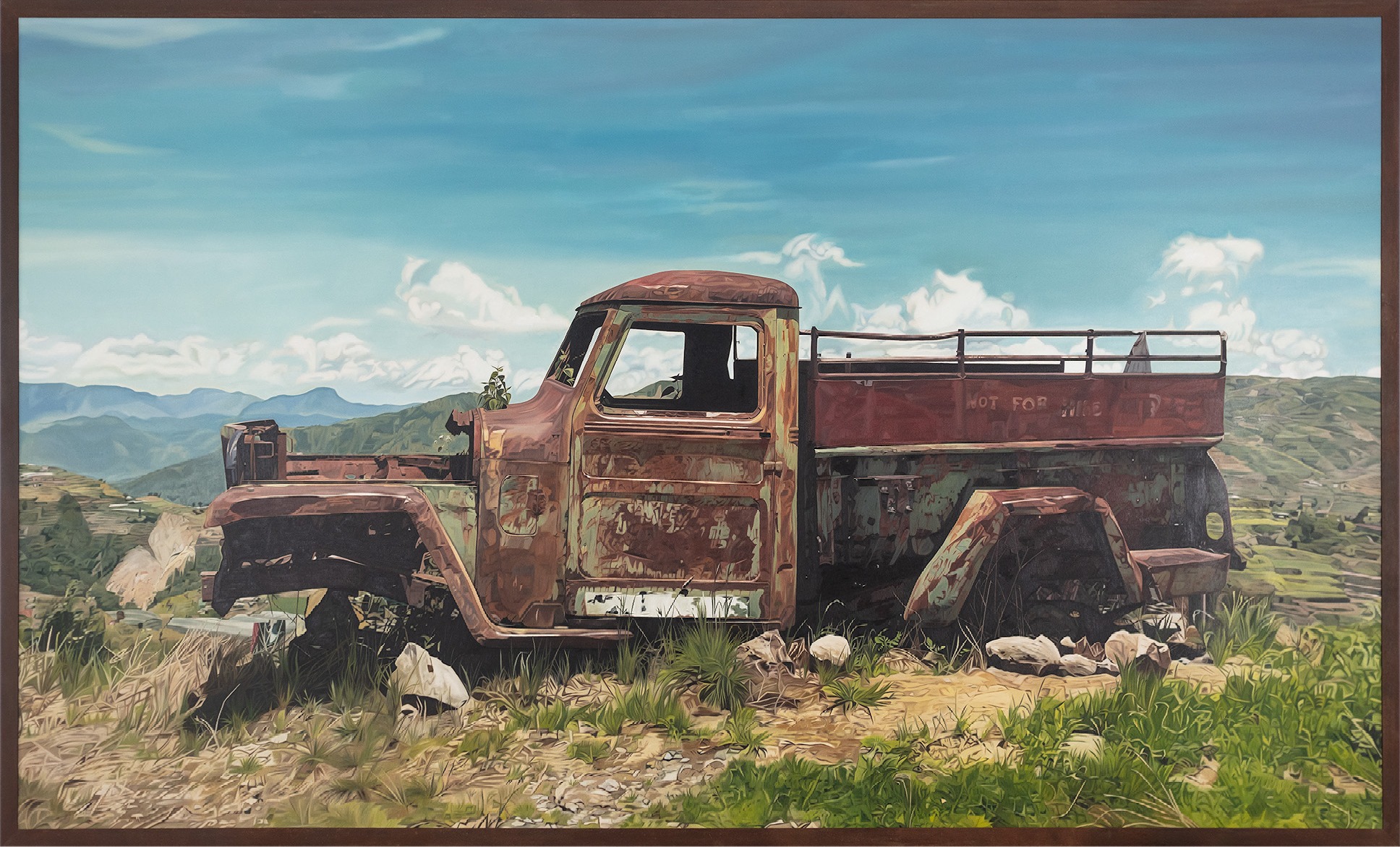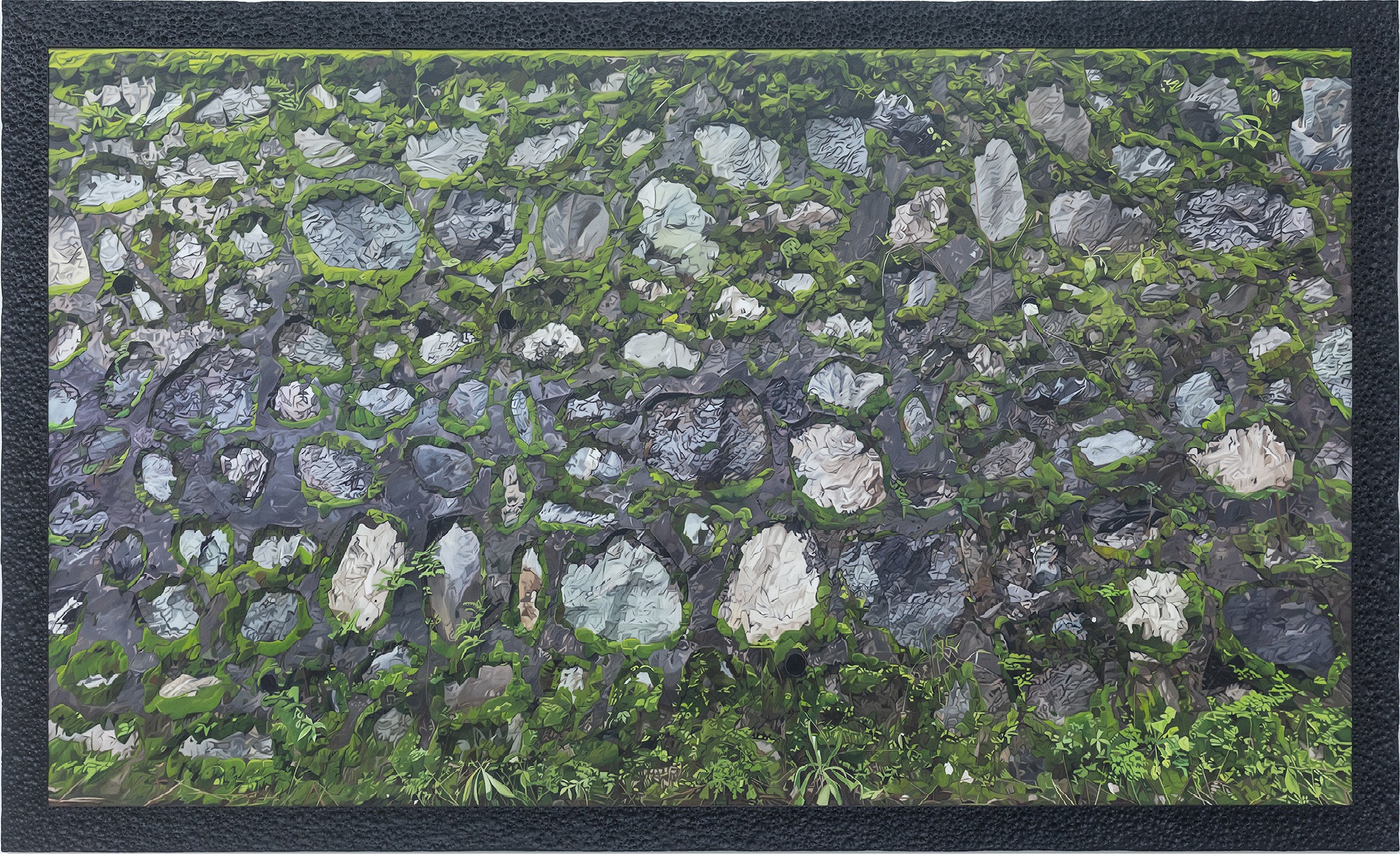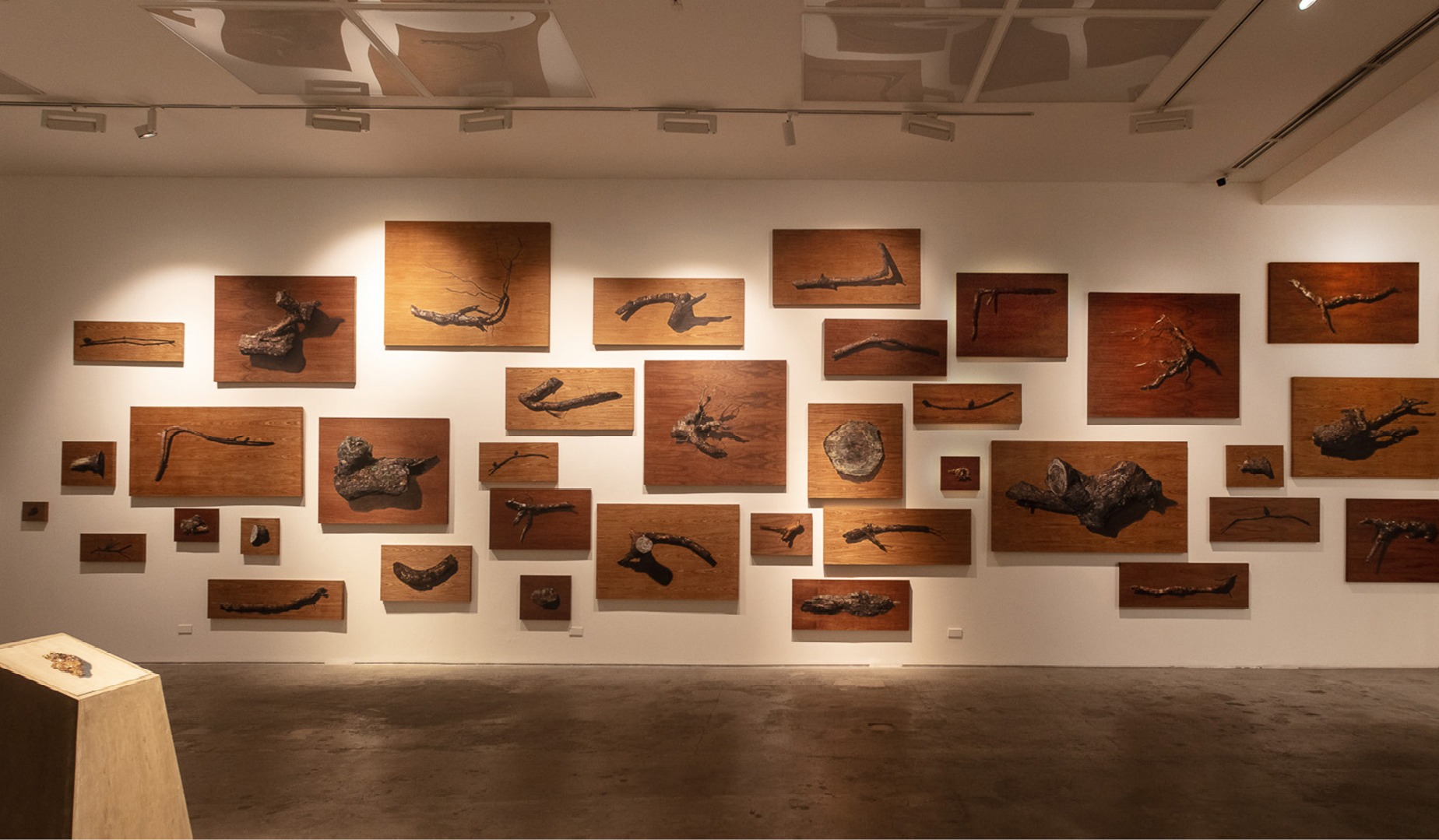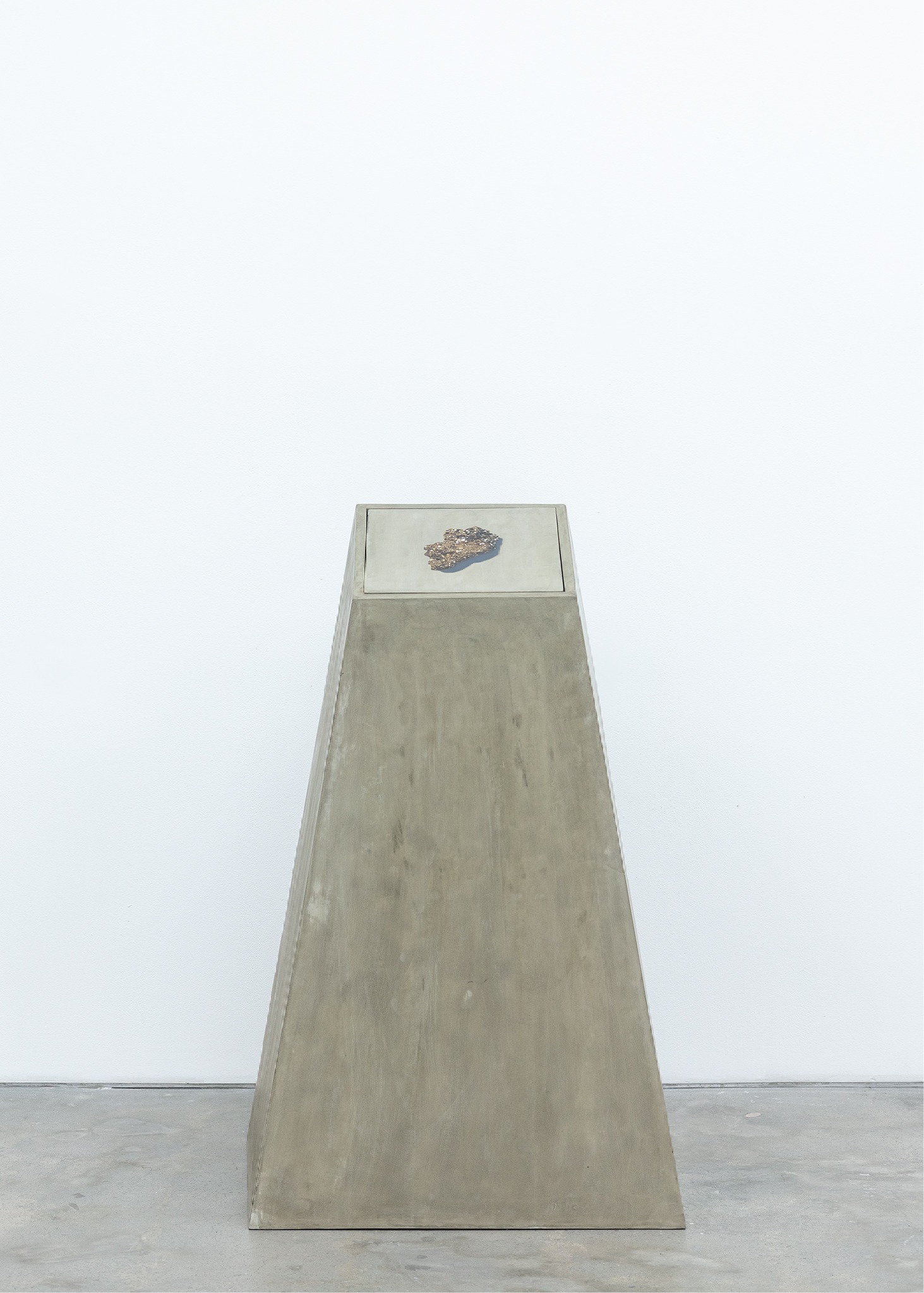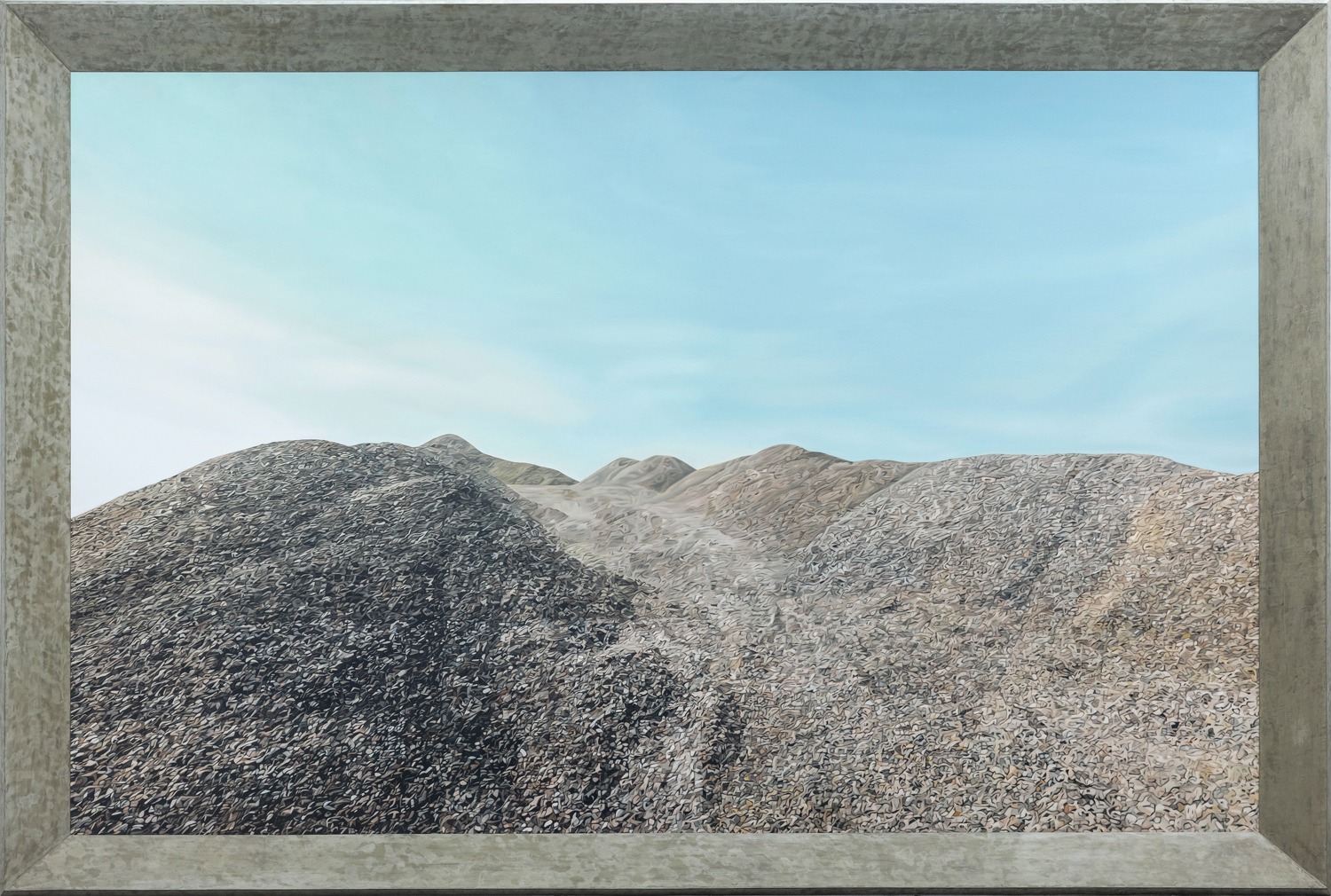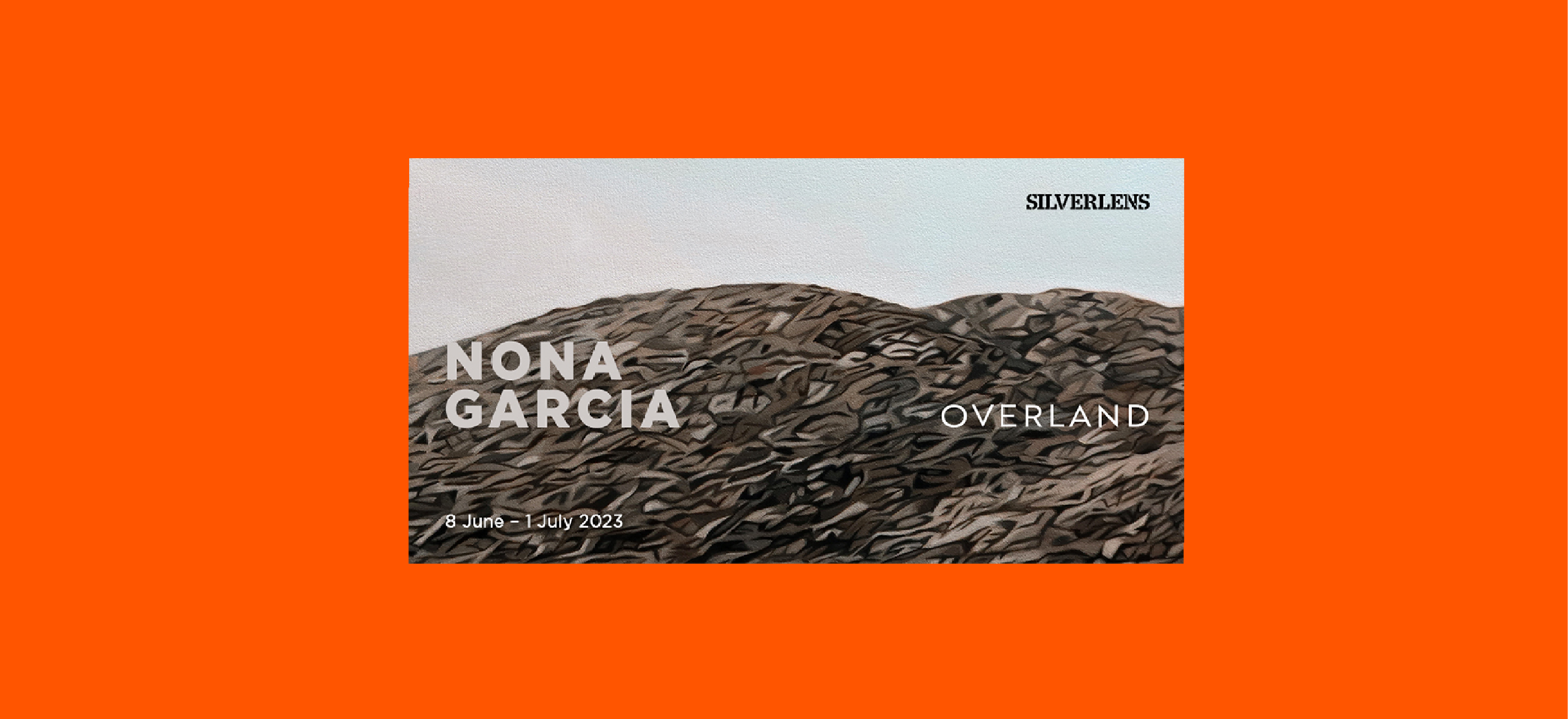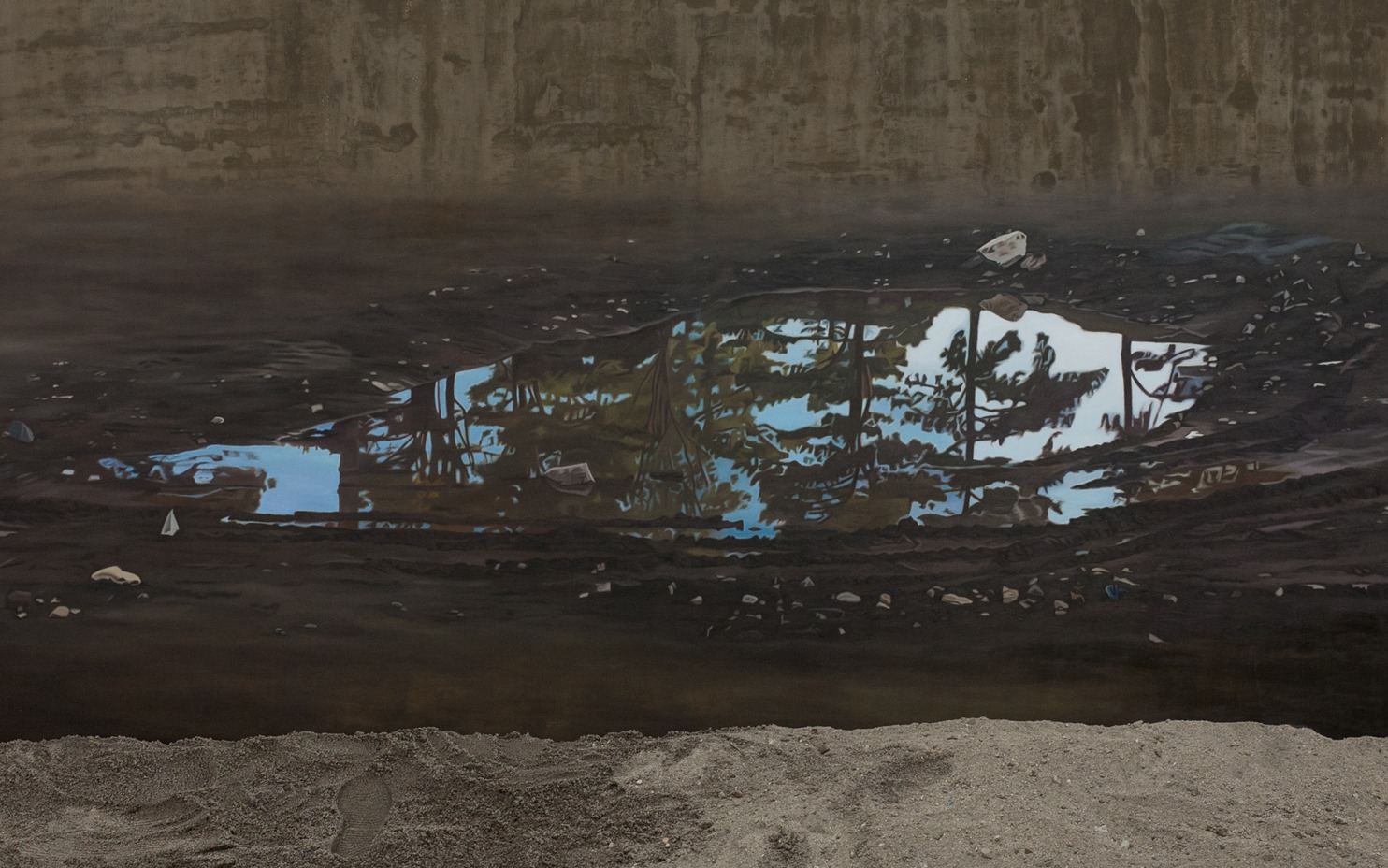
About
With an art practice that spans two decades, Nona Garcia continues to be recognized as one of the most prolific artists who paints after the photographic image. Through a remarkable merging of subject, style, and concept, her compositions unceasingly generate images that situate viewers within the vague yet monumental aspirations of the real—-all culled from her immediate surroundings and encounters—-where the poignant, emblematic, and personal moment becomes shared epiphanies through her paintings.
These epiphanies within Garcia’s own journey across visual landscapes are gleaned from a specific place—one that is most significant to her: Baguio and the nearby towns of the Cordilleras up north.
In Overland, her latest solo exhibition at Silverlens, she places together these brief encounters between the wandering eye and the world it inhabits by painting objects, relics, and phenomena—which could be viewed as either trivial or colossal; as either surprisingly odd or exceptionally commonplace. Moreover, she explores the properties of painted surfaces like wood and cement to further embed pictures onto the rudiments of their materiality.
In the eponymous painting, we are introduced right away to this notion of place, together with the scale of Garcia’s works. Painted in a large canvas is the image of an old, abandoned, post-war truck. Situated in the context of the Cordilleras, this usual portrayal of American sentimentality to western values of resilience and heroic sacrifice become, in Garcia’s painting, the frustrations caused by certain ambivalent effects of their stay as a colonizing power-–wrapped in the guises of benevolence and progress. It lays still, without its wheels, rusty and stagnant, against the majestic view of the sky and mountains. We get a sense of the altitude—hence the ambiguity generated by the feeling that something was misplaced. Or something was moved as an attempt to initiate a symbol. This old truck—like a monument—when painted, becomes prone to suddenly being able to speak ‘histories.’
In another large-scale work, history becomes the oxidized hull of a mutilated tanker truck. Like a series from a fragmented story—it attaches itself to the previous image as they continue to bear the motif of corrosion and decay. In this picture, the ravage is more indicative of how nature clings on to a structure: engulfed by an overgrowth of leaves and vines, like a prey to a jungle.
As a painter who rarely strays from certain fascinations, Garcia continues her pseudo-series with covertly inter-related subjects. In perhaps slowly revealing the true nature of things, she consequently decides to show it through the symbolic. Like in the work, Building Mountains, where she paints what could be described as the foundation of mountains: rocks and gravel. The attention to scale once again becomes beholden with meaning. The painting—immense, the subject—is but a miniature of nature. Here, she tries to scale the altitude of mountainous Baguio through tedious work on canvas. Every particle of stone becomes the rudiments of the mountain-like structure. Place, now, becomes the natural form derived from natural materials. If we pay attention to their frames, their props, their support structures, we realize that they are also in relation to the subject’s situation: rocks, burnt wood, and corroding metals.
In both Untitled Pine Tree and Fool’s Gold, these concepts become more explicit as the images created show a direct relation to the painted surfaces. Like in the former where several branches, arguably unique in character, are painted over wood. And in Fool’s Gold—Nona Garcia recounts her own experience encountering such artifacts which are also unique to the city of Baguio—painted on a block of cement.
This acuity—of treating painting as the sum of its parts—is indicative of how Nona Garcia’s treatment of the subject goes beyond the conventional ideas of representation and photography. One could say—it goes beyond the visual. The tactile elements of the frame, the stands, the pedestals, the surfaces, all allude to their affinities. And this affinity is the product of place.
Baguio City—Garcia’s adopted homeland—receives an incredible tribute through her latest show. One that goes beyond the general perception of the place, oftenly called the ‘nation’s summer capital,’ as hers demonstrate a deeper bond with the lay of the land: rocks, slopes, trees, and other objects that became one with it. Like a true settler, she is able to generate a highly subjective impression of what makes the place unique. And the distinction, most of the
time, feels like an invitation to hold on or bring back a possible remoteness. Unadulterated, unspoiled, and closer to silence.
Nevertheless, there is nothing plain or inconsequential about Garcia’s depiction of the visible world. Her attention to detail, her interpretation of actuality, along with a deep connection to subjects that might ordinarily escape the familiar view, attest to the power of deciphering the land for what it is: a memorialization that seeks its own beauty.
– CLJ
Nona Garcia (b. 1978, Manila) probes into the essence of things, setting up a dichotomy between the transparent and concealed, framed and natural, the sublime and the everyday. In 2013, she relocated to mountainous Baguio City in Benguet Province. Since then she has responded to the immediacy of this landscape, creating large-scale, highly realistic paintings of scenes viewed in and around her new home. Garcia’s X-ray works are another key aspect of her practice. Focusing on Cordilleran and indigenous artefacts, reliquaries of saints, or delicate animal bones designed in the form of a mandala, she has created installations using lightboxes as well as window-based works. Paradoxically, the process of exposure results in images that are more mysterious — bathed in luminescent blue light, each flaw made visible, the bones and objects take on a new life.
Installation Views
Works
